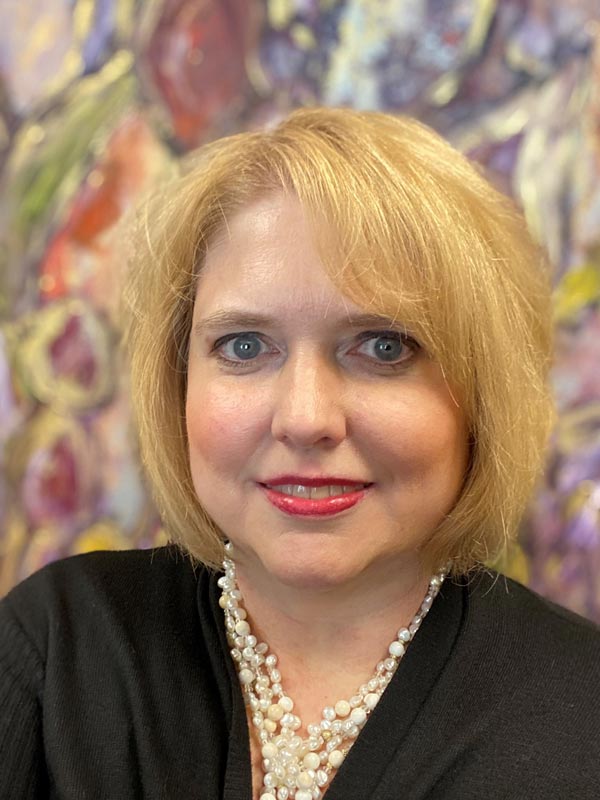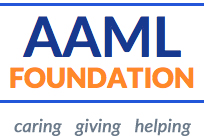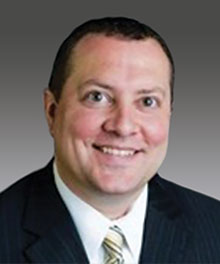FROM THE FOUNDATION PRESIDENT

On behalf of the AAML Foundation, I am pleased to welcome you to the first issue of the Forensic and Business Valuation Division Newsletter F&BV NEWS AND VIEWS for 2022. This newsletter is a collaboration of the Foundation’s Forensic and Business Valuation Division and our Publicity Committee.
There are currently 34 Members of the Forensic and Business Valuation Division who are located across the country. To join the Division, a prospective member must certify that 50% or more of his or her practice is in the field of matrimonial law, including business valuation, forensics, tax and/or litigation support, and that he or she is in good standing with all professional organizations with whom he or she is affiliated and has not been subject to any professional discipline. Applications must contain at least two references from either AAML Fellows or Charter Members of the Division. The Members of the Division share the Foundation’s philanthropic interest in helping children and families through grant making. Additionally, the Members agree to make a sustained commitment to the charitable goals of the Foundation.
This newsletter is an opportunity for the members of the Division to submit articles about topics of general interest relating to family law-oriented forensic accounting and business valuations. It is also an opportunity for all AAML Fellows to obtain, free of charge, access to information from forensic accountants and business valuators that may assist you in your practice.
The featured article in this issue is titled Post-Pandemic – Application of Valuation Methods using the Income Approach and was written by James M. Godbout, ASA, CVA, CDEFA, CFE, CFP, from Marcum LLP in Chicago, Illinois. As we are emerging from the pandemic, the lasting effects on our lives, businesses and economy are important to consider – even in how to value a company. The article is extremely well written, timely, and useful. I know it will help you in your practice, and I know you will enjoy reading it.
With warm regards,
Anne Lamkin Durward
AAML Foundation President
Post-Pandemic – Application of Valuation Methods using the Income Approach
by James M. Godbout, ASA, CVA, CDFA, CFE, CFP®
The two main methodologies in the Income Approach used by valuation professionals are the capitalization of cash flow method (CCF method) and the discounted cash flow method (DCF method).
The CCF method is a single period income-based approach to valuation. The capitalization of cash flow method values a business based on a single, expected cash flow stream, capitalized by a risk-adjusted rate of return. Using a single-period cash flow model is appropriate when a company’s normalized historical level of cash flow are believed to be representative of future results and when a company is projected to grow based on a sustainable and modest growth rate.
The DCF method is a multi-period valuation model that converts a future series of “normalized cash flows” into value by reducing them to present worth at a rate of return (discount rate) that reflects the risk inherent therein. These future cash flows are comprised of two components: the cash flows in the discrete projection period and the cash flows expected to be generated from the end of the discrete projection period into perpetuity. Using a DCF method is appropriate when a company’s normalized level of cash flow are expected to be variable for a period of time before stabilizing.
Before COVID-19 hit the world, the U.S. economy was experiencing consistent growth for one of the longest stretches in history. Interest rates have been historically low for a long time and stocks seem to do nothing but go up. Try asking a thirtysomething year-old financial planner or wealth manager for their investment philosophy during a bear market, period of high interest rates or even a recession. Most of them will give you a clueless look.
Similarly, during this time of stable growth many valuation professionals relied heavily on weighting historical income and cash flows in order to predict the future and opine on a value. Therefore, many valuation reports used the CCF method. There is nothing wrong with applying this methodology. Frankly, this methodology is typically easier for some to understand, more favorably accepted by the courts and oftentimes viewed as less speculative than a multi-year forecast (Although let me address this fallacy by saying the CCF or DCF are both projected cash flow methods. The key difference between these methods is determining when cash flow and growth stabilize.)
When COVID-19 hit, it was very clear that “it was not business as usual anymore”. During COVID-19, some businesses were forced to close their doors for good while others have flourished. The amount of uncertainty faced by some businesses was incredible. How long would lockdowns last? How long would people have to wear masks? How long before travel resumes? How would this effect revenue and earnings growth?
For many of us gray-haired valuation professionals, we have witnessed and experienced high levels of uncertainty in the past. The 2000 Dot.com bubble burst. The 2008 housing market crash. After these events, valuation professionals still found ways to develop well-reasoned and credible opinions of value. All of these events had a common theme. Valuation professionals increased their usage and reliance on the DCF method when rendering an opinion of value. So, why the increased emphasis on the DCF during COVID-19? Because no longer could one simply look at the past and say with a reasonable level of certainty that they believed the past would be a good indicator of the future.
A valuation professional is hired to provide an opinion of value. Moreover, an opinion of value is based on future expectations. The valuation professional has to provide an analysis and opine with credibility as to how they see the future and explain how they reached a conclusion. While subjectivity plays a role in any valuation, the valuation professional should credibility point to data they used to base their opinion.
Well, I, for one, am a big believer that when the pendulum swings it oftentimes swings too far to one side. While it may take some time, it will swing back to a more stabilized condition. When this occurs, things will likely stabilize, and valuation professionals will likely revert to putting more emphasis on the CCF method. However, even after two years of COVID-19, we are not there yet.
Today, post-pandemic, we are faced with an on-going war, supply chain issues, labor shortages and inflation of 7.9% (per February CPI). We have not stabilized yet. Depending on the company and its industry, it is likely there will continue to be an emphasis on the DCF method at least for the time being.
Depending on the company, its industry and the overall general economic conditions, things are likely to be rocky for the near future – just like they were for several years after the Dot.com bust and housing market crash. Two years after the start of COVID-19, we are still in a period of uncertainty and will likely be so for a little while. Therefore, while there has been a greater emphasis on the DCF method at the beginning and during COVID-19, you will most likely see this continuing for some time until things stabilize.
So, how does this affect the valuation reports and your reliance or attack on them? Valuation reports will likely require more work as professionals spend additional time conducting research to support their opinions especially related to short-term versus long-term forecasts. An increased level of research used by the valuation professional is likely to cause additional work the attorney on spending more time analyzing the valuation professional’s file to see what the professional relied upon in order to support the opinion of value. When all of us spend more time on a project, costs go up. Inflation of nearly 8% may now make a little more sense.
FOUNDATION NEWS
Welcome New BVs
The Forensic & Business Valuation Division was founded to permit forensic experts and business valuation professionals of National repute and unquestionable integrity and professionalism to partner with the AAMLF to assist in facilitating its goals.
New F&BV Members are asked to make an initial donation of $3,500. All F&BV Members pay annual dues of $1,000. F&BV Members are provided the opportunity to attend the Annual Foundation Lifetime Members’ Luncheon and Reception in November and mingle with hundreds of AAML Fellows and other Members of the Division. They are also able to attend the AAML Annual Meeting in November and the AAML Mid-Year Meeting in March as paying guests.
In addition, the Foundation holds regular videoconference meetings for the F&BVs to discuss issues relating to family law forensic accounting. F&BV Division Members are also invited to contribute to the Foundation’s quarterly newsletter, F&BV News & Views.
The Foundation welcomes the following new F&BV Members:
Karolina Calhoun, CPA, ABV, CFF
 Karolina Calhoun is Vice President at Mercer Capital. She has been involved with hundreds of valuation and litigation support engagements in a diverse range of industries on local, national and international levels.
Karolina Calhoun is Vice President at Mercer Capital. She has been involved with hundreds of valuation and litigation support engagements in a diverse range of industries on local, national and international levels.
Karolina provides valuation and forensic services for family law, gift & estate planning, commercial litigation, mergers & acquisitions transactions and other matters related to privately held businesses, dissenting shareholder disputes, intellectual property, personal good will, etc. In addition to such work, she has also provided economic and financial damages studies, asset tracing, loss, profit and lifestyle analyses.
She has experience in valuing a wide range of intangible assets, such as patents, customer lists, trademarks and contracts. These engagements have been conducted for the purposes of mergers & acquisitions, buyouts, financial reporting, setting gift taxes, allocation of purchase price, litigation support, shareholder dissent, buy-sell agreements, dissolutions, financing and business planning.
Karolina served as the 2020 and 2021 Valuation Chair of the AICPA’s Forensic & Valuation Services Conference and is a member of the AICPA’s CFF Exam Writing Task Force. She is the 2018 recipient of the Forensic and Valuation Services (FVS) Standing Ovation Award presented by the AICPA to professionals for significant contributions in their specialty areas and in their communities.
In addition, Karolina has presented on various valuation and business topics to attorneys, accountants and business professionals for the purpose of educating the public.
Missy Johnson, CBACVA, MAFF

Missy is a Shareholder with the Forensics, Valuation and Litigation Support Practice of Elliot Davis, LLC and serves her customers from their Charleston, South Carolina office. With approximately 20 years of experience, Missy has testified on numerous occasions in several jurisdictions as an expert witness on issues regarding family law accounting, economic damages and business valuations.
Missy specializes in forensic accounting. She has analyzed accounting records, tax returns and other financial information, providing support to attorneys and their clients for family law matters, shareholder/business disputes, lost wages and complex financial issues.
Additionally, she has prepared business valuation reports for family courts and for estate and gift tax purposes. Missy’s experience includes extensive consulting work, providing financial accounting for complex financial issues in civil litigation.
The Foundation welcomes qualified service providers to show their support of the work of the Foundation by becoming a member of the Forensic & Business Valuation Division. Current members enrolled in the F&BV Division are:
Charter Members
• Lester Barenbaum, Ph.D., Financial Research Associates
• David E. Blumenthal, Gursey Schneider, LLP
• Stephen J. Bravo, Stephen J. Bravo & Company
• Cindy Eddins Collier, Healthcare Valuation Solutions
• Stacy Preston Collins, Financial Research Associates
• Joseph S. Estabrook, STOUT
• Jay E. Fishman, Financial Research Associates
• James M. Godbout, Marcum LLP
• George B. Hawkins, Banister Financial, Inc.
• James Hitchner, Valuation Products & Services
• Tracy Farryl Katz, Gursey Schneider, LLP
• Mark S. Luttrell, Luttrell Wegis LLP
• Christopher Mercer, Mercer Capital
• William J. Morrison, Withum, Smith + Brown, P.C.
• Kenneth J. Pia, Marcum LLP
• David E. Politziner, EisnerAmper, LLP
• Ronald L. Seigneur, Seigneur Gustafson, LLP
• Briggs P. Stahl, Baker Tilly Virchow Krause, LLP
• Robert A. Stone, Kaufman, Rossin & Co.
Members
• Marc Bello, Edelstein & Company
• Karolina A. Calhoun, Mercer Capital
• Justin L. Cherfoli, STOUT
• William C. Dameworth, Forensic Strategic Solutions
• Marie Ebersbacher, CBIZ MHM, LLC
• Missy J. Johnson, Elliott Davis
• Howard D. Kaminsky, CBIZ MHM, LLC
• Sandra R. Klevan, Financial Research Associates
• Vladimir V. Korobov, Marcum LLP
• Christopher L. Leventis, Leventis Financial
• Harold G. Martin, Jr., Keiter
• Anthony S. Phillips, CBIZ MHM, LLC
• Brian R. Potter, STOUT
• Michael J. Raymond, BST & Co. CPAs, LLP
• Catherine B. Stoddard, Dixon Hughes Goodman
Those interested in further information about the F&BV Program should contact Jay E. Fishman, jfishman@finresearch.com or Lawrence A. Moskowitz, moskowitz@perrylaw.net.

